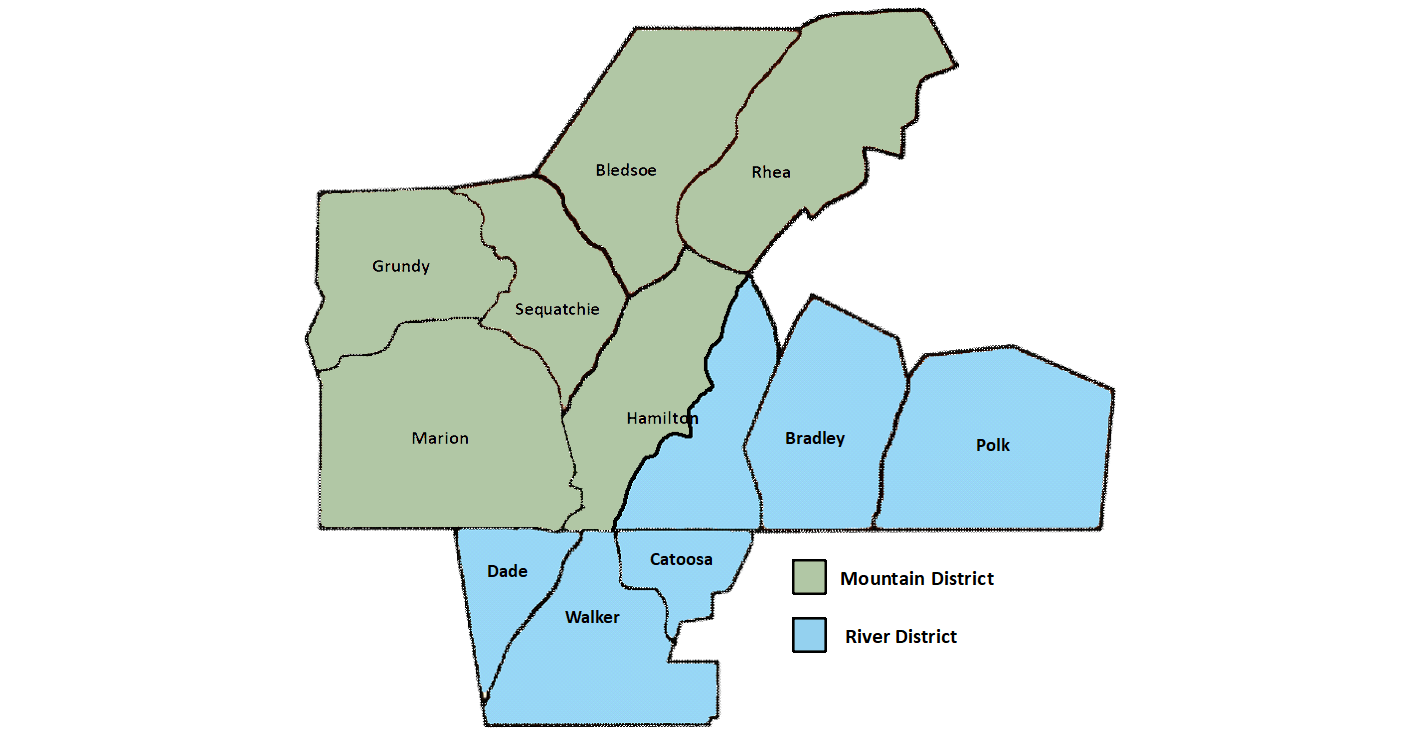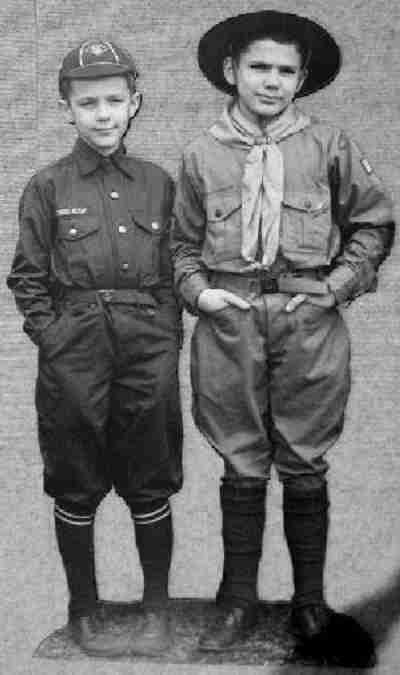ABOUT
About Us
"A Scout smiles and whistles under all circumstances."
Cherokee Area Council
Boy Scouts of America
Our purpose is to provide an educational program for boys, girls and young adults to build character, to train in the responsibilities of leadership and participating citizenship, and to develop personal fitness.
The Cherokee Area Council is headquartered in Chattanooga, Tennessee.
We serve over 11 counties across Southeast Tennessee and Northwest Georgia.
Cherokee Area Council History
A group of men met on November 16, 1910 at the Chamber of Commerce to organize and implement this new Boy Scout program. Those in attendance included Mayor T. C. Thompson, John A. Patten, Judge S. D. McReynolds, S. Bartow Strang, Nathan Bachman, William E. Brock, Harry Sims, Maj. Fred H. Phillips, W. C. Johnston, William King, and Judge M. A. Fleming. This meeting led to forming the first troop in Chattanooga. Prof. W. J. Ziegler, principal of North Chattanooga School, was Scoutmaster.
The local Scouting movement experienced a burst of activity in 1914. On December 8 of that year, community leaders formed the Chattanooga Council. The Boy Scouts employed W. C. Fowler as first Scout Executive.
W. H. Sears received a commission from the national headquarters in New York authorizing him to assume leadership of the Boy Scouts in Chattanooga.”
By December 1914, more than 200 boys had enrolled in the Chattanooga Council.
In 1915, the Chattanooga Council operated its first Boy Scout camp. The camp was located on Dry Valley Rd, twelve miles from the city at the foot of Walden’s Ridge. They called this 90-acre farm “Boulder Nook.” Camp consisted of a headquarters tent, cook shack & dining room combined, as well as six scout tents. A maximum of 30 boys could stay in camp and the Scout Executive served as Director. The price for a week at camp was only $2.80. Camp operated for eight weeks “without a single accident or even a case of sickness.”
In the spring of 1919, the council purchased a permanent summer camp, 200 acres on the side of Raccoon Mountain, 19 miles from Chattanooga, near Douglas ferry landing, on the Tennessee River. The scouts and leaders dammed the stream to make a lake and laid out an athletic field. Chattanooga lumber companies donated lumber for three cottages and a mess hall that would accommodate 100 scouts at one time. Activities included: swimming, athletics, first aid, telegraphing, signaling, woodcraft, nature life, bugling, beekeeping, gardening, and all phases of Scouting. Scout Executive Roy Bachman was the Camp Director. The boys swam in the lake, tended gardens for fresh vegetables, picked blackberries for cobbler, and ate fresh fish caught in the nearby river. Camp Raccoon was the Council’s summer camp from 1919 through 1924 and served around 220 boys each season.
In a 1922 article of the New York Times, highlighting Boy Scouts all over the United States, the Chattanooga Council was praised for their “civic service.” Projects mentioned included:
- Distributed 300 posters for Red Cross and 300 more for forest fire prevention
- Gave 7,200 hours of service to the Confederate Reunion in Chattanooga
- Troops collected food and distributed baskets at Christmas
- Distributed milk at children’s playgrounds in the area
- Assisted American Legion in selling poppies for the Soldier’s Memorial Fund
- Assisted the Baptist Convention, serving as messengers, pages, and ushers
- Placed posters for the Chinese Famine Fund, and
- As always, assisted at the National Cemetery Memorial Day
The March 13, 1925 issue of the Chattanooga Times reported the news that the Chattanooga Boy Scout council had decided to buy a ninety-two-acre tract near Cave Spring in Middle Valley on North Chickamauga Creek. The Boy Scouts named their new camp “Tsatanugi,” using the same Cherokee word meaning “rock which comes to a point” from which Chattanooga’s name was derived. As a memorial to their father, the sons of John A. Patten donated several thousand dollars to construct the camp’s new mess hall.
James L. Jenkins, the first black BSA professional Scouter was hired in the Chattanooga Council in 1927. Mr. Jenkins was responsible for organizing Scout troops for the black youth of Chattanooga and also was Camp Director for Camp Ramsey-Norris, the segregated summer camp. In 1937, James L. Jenkins served as the contingent leader for black Scouts in all of Region Five to the first Boy Scout National Jamboree on the mall in Washington, D.C.
In 1939, Scout Carey Hanlin was chosen to be the President of Provident Insurance Co. for “Boys Day.” When he grew up, he actually became the real CEO of Provident during the 1970’s & 1980’s.
Chattanooga area Scouts have been decorating graves or placing flags at the Chattanooga National Cemetery since the first decade of Scouting. The tradition continues each Memorial Day weekend.
Copyright © 2023 Cherokee Area Council | All Rights Reserved | Powered By Flypaper |
Privacy Policy




